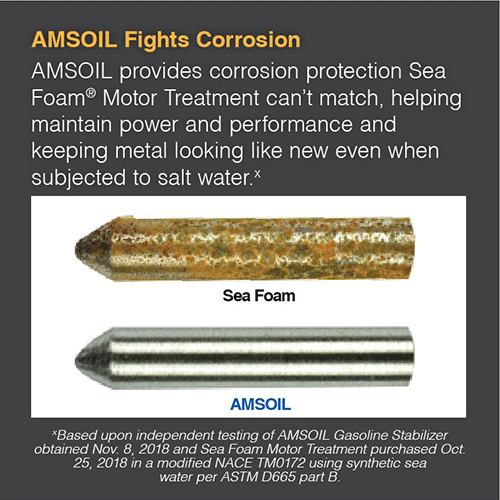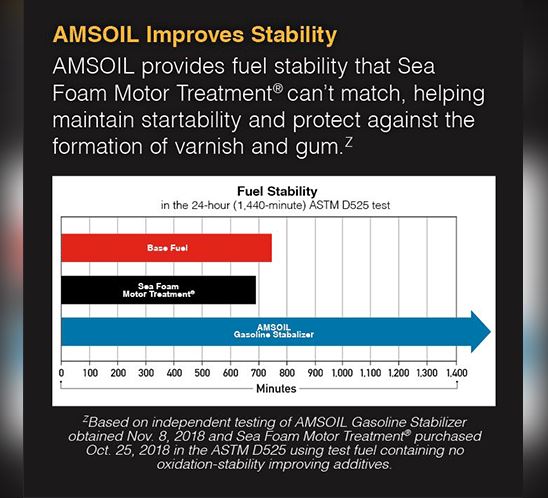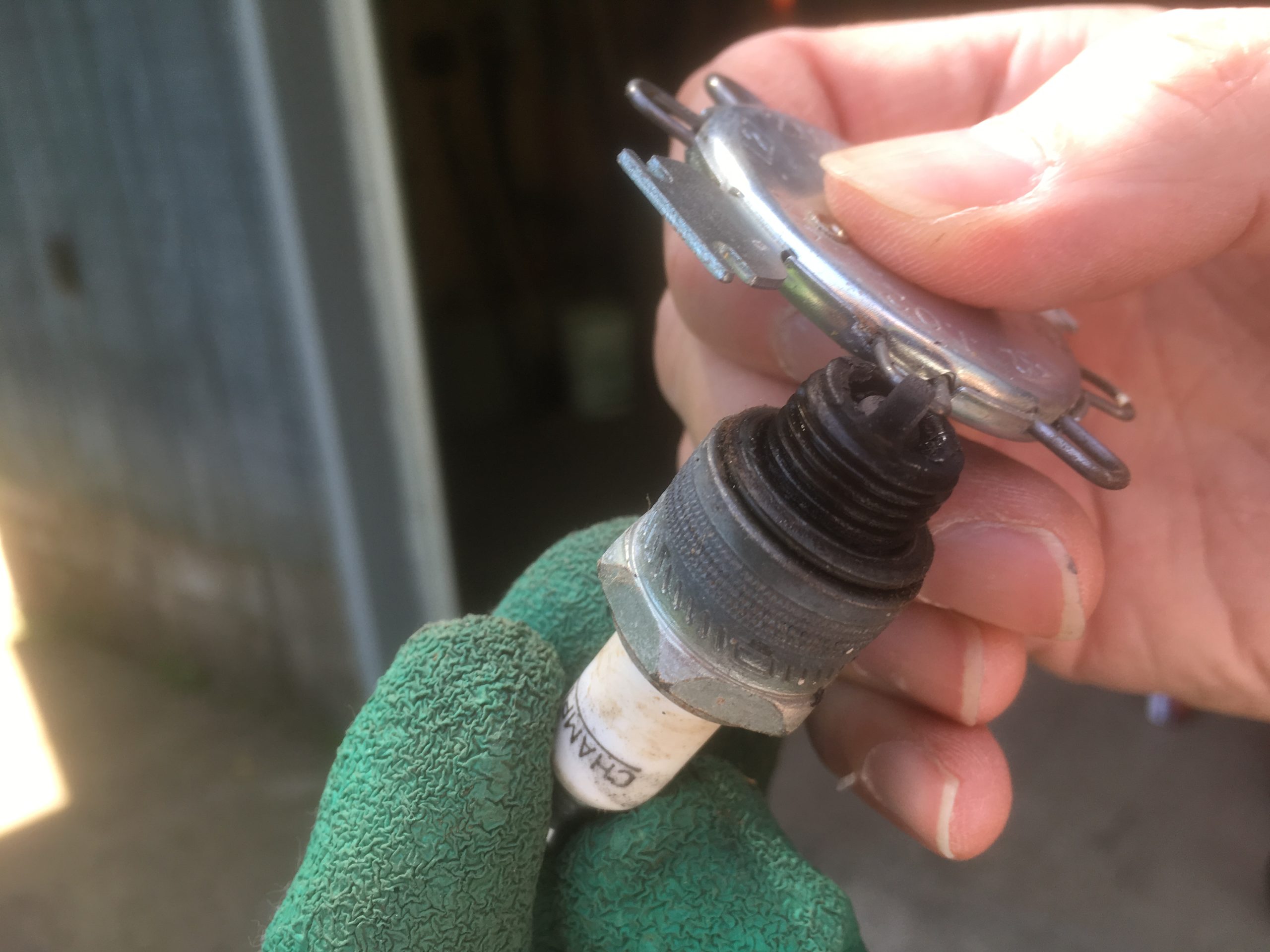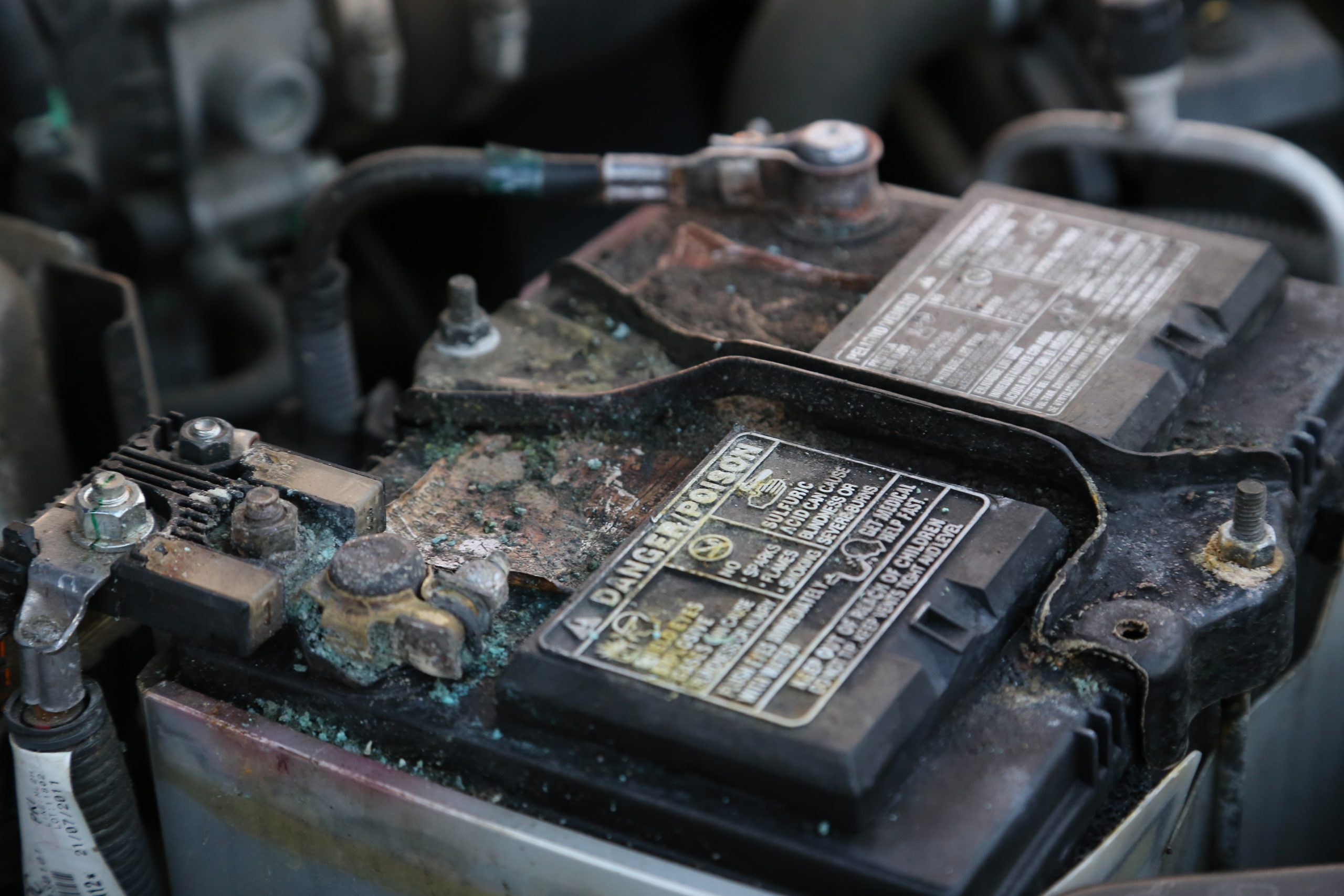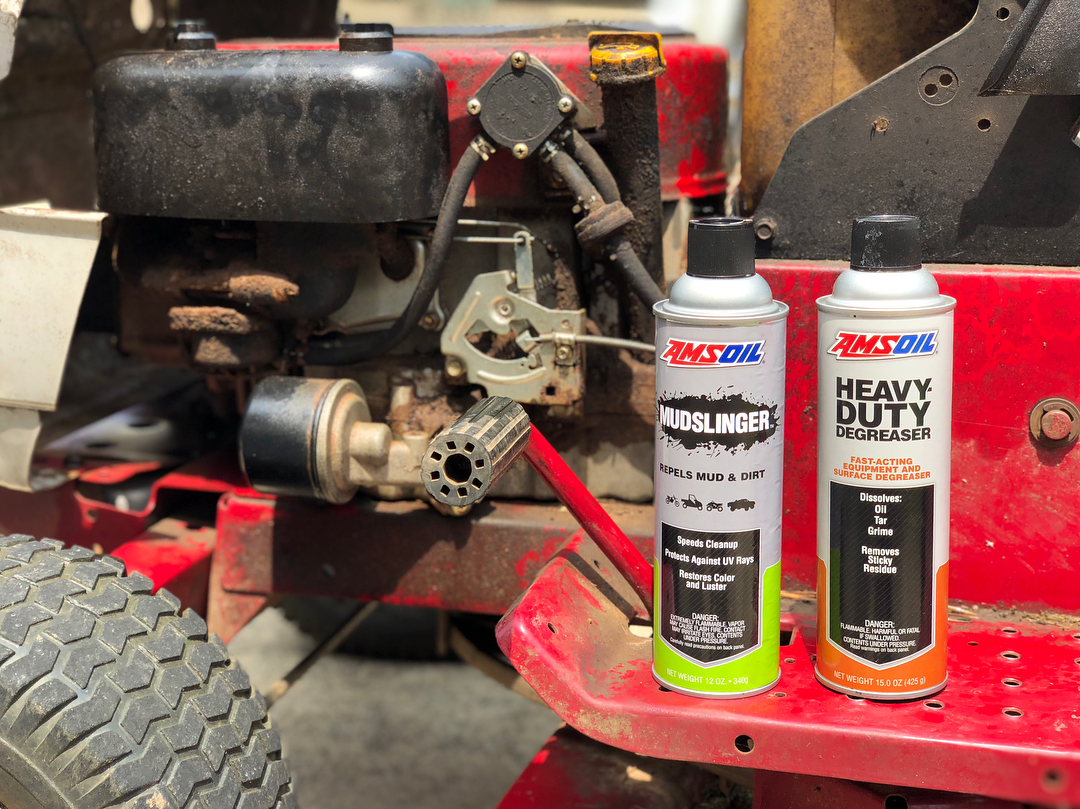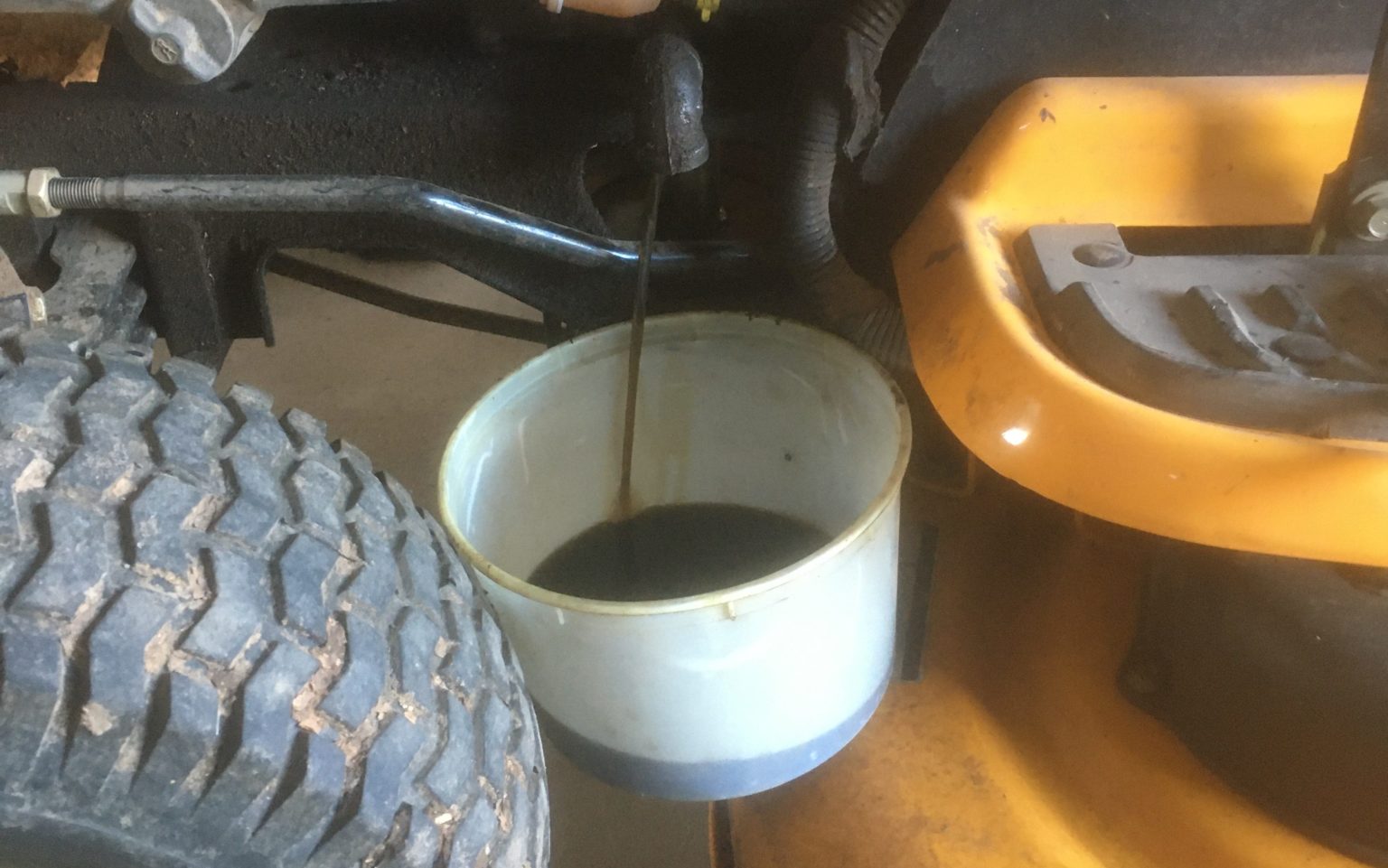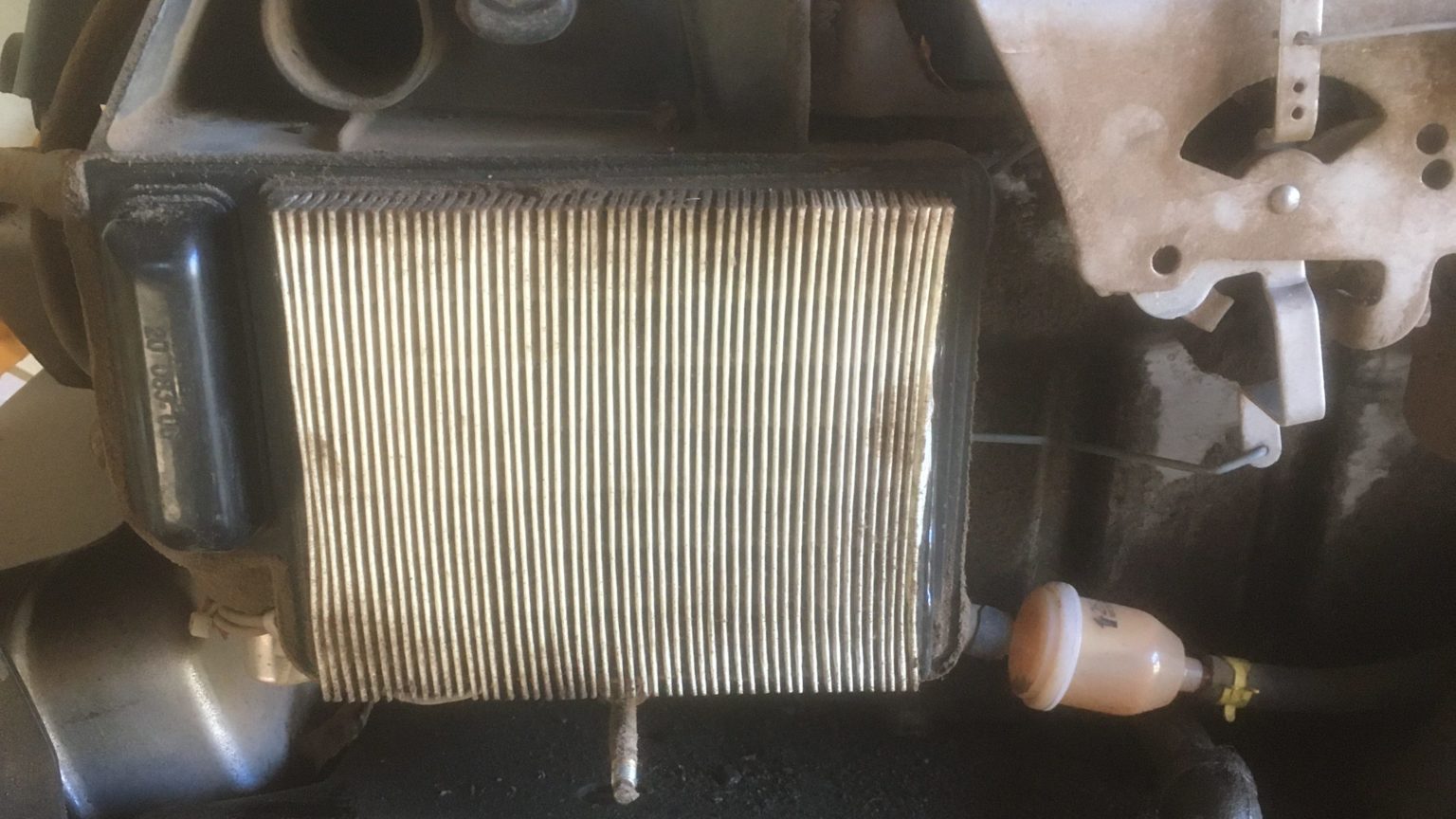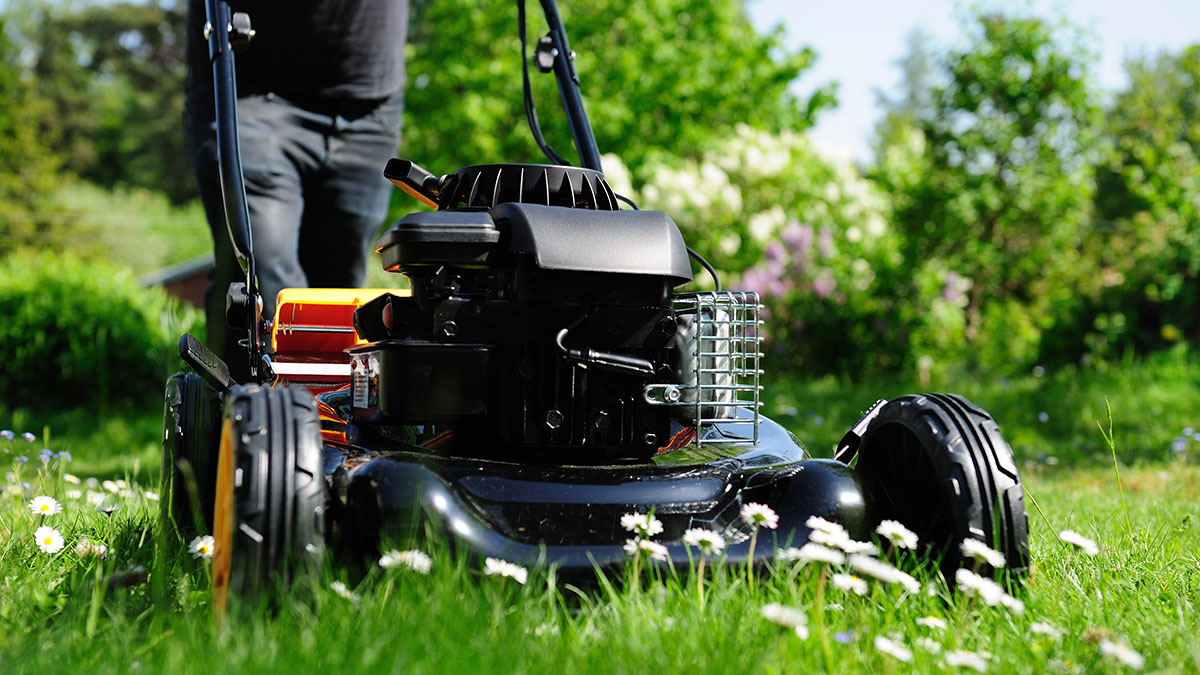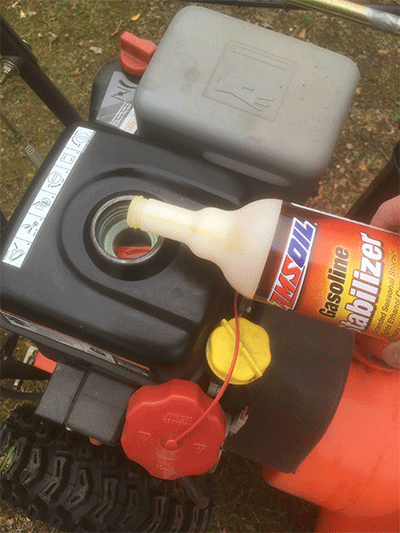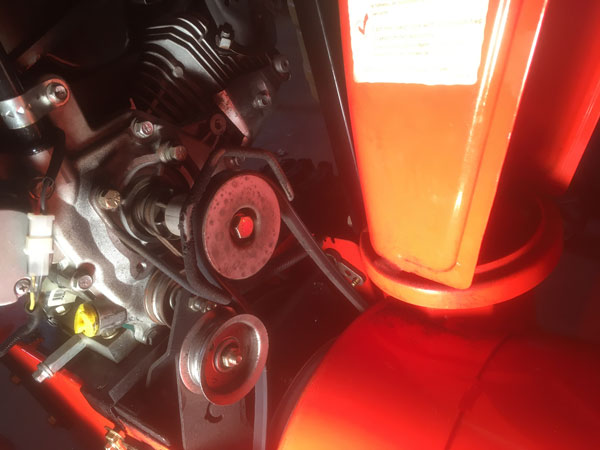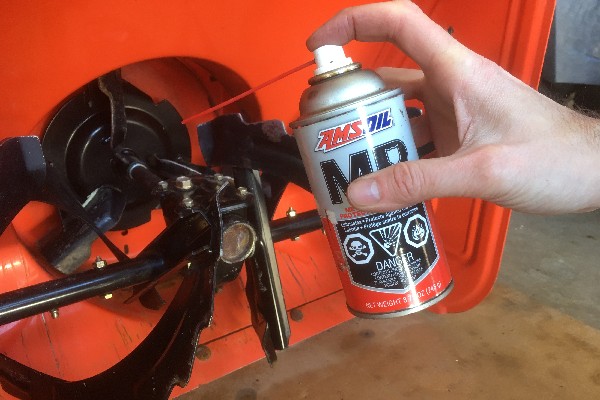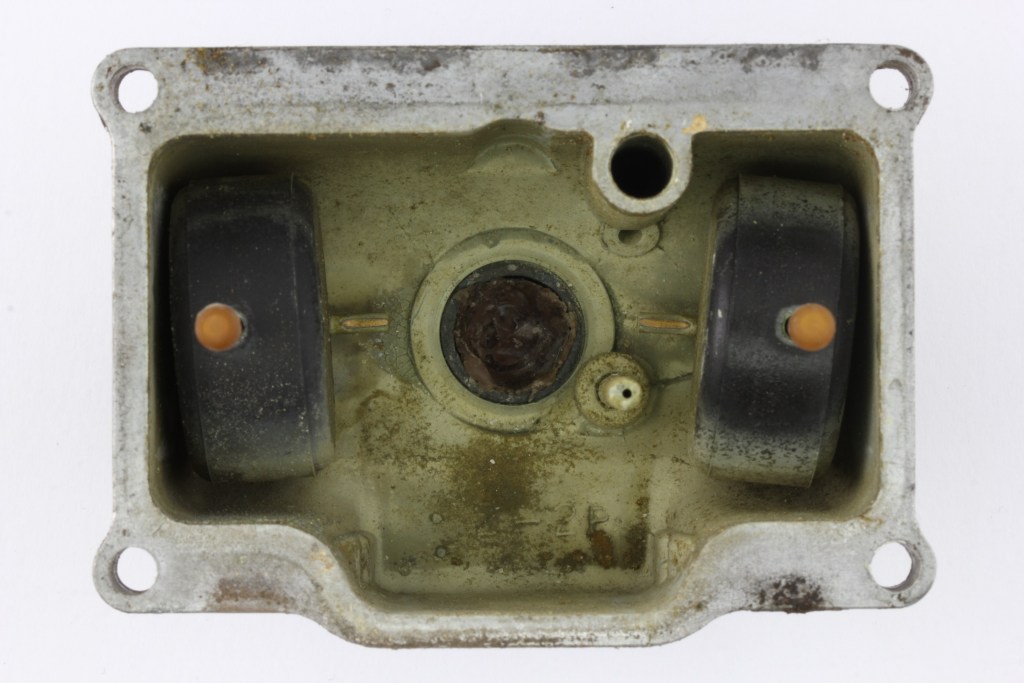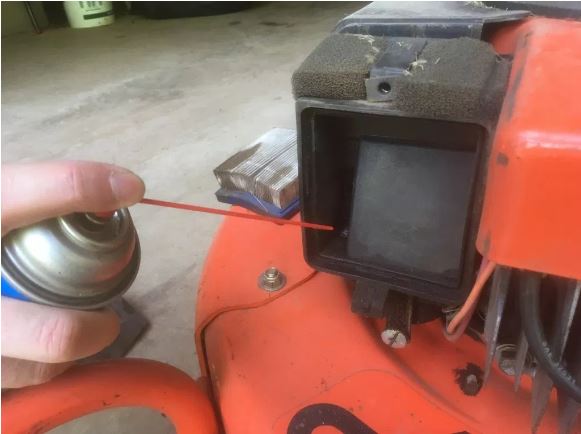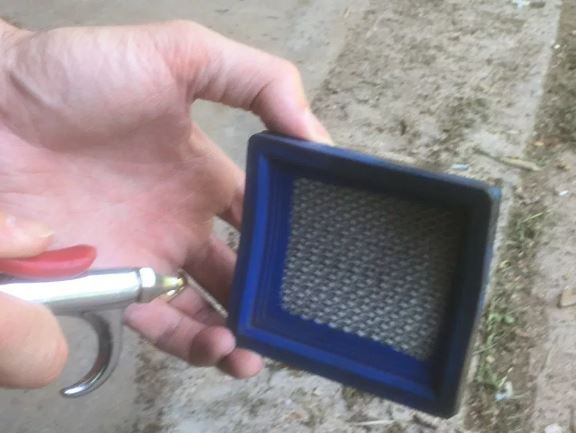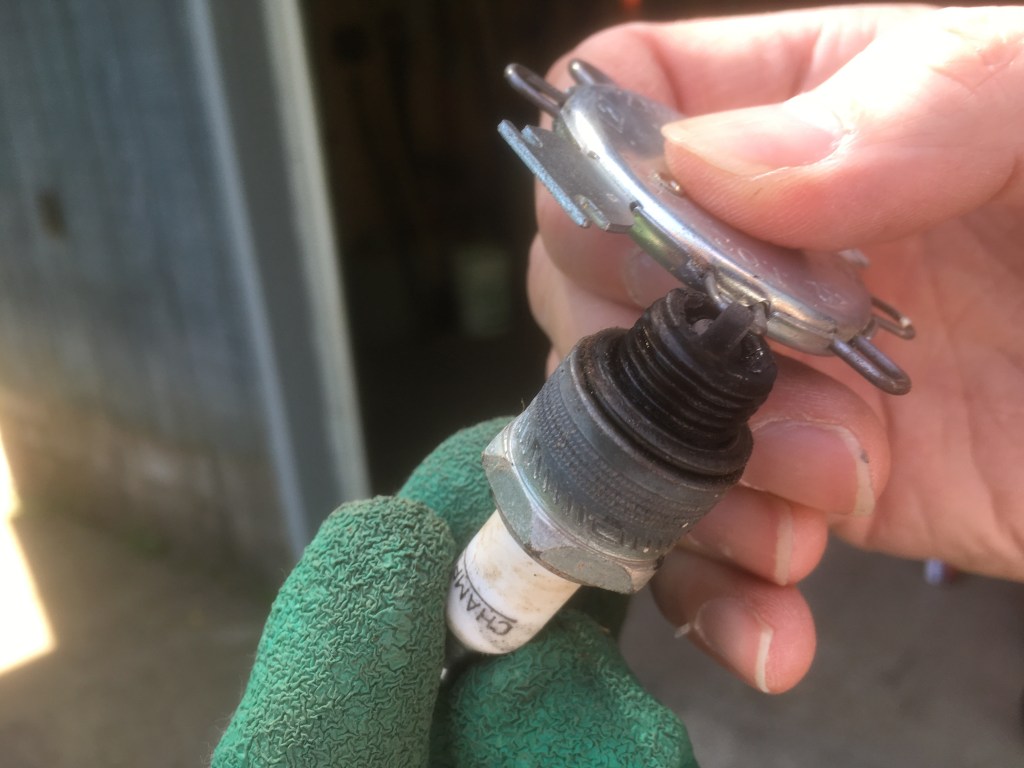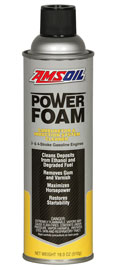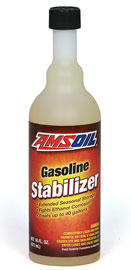How to Store Your Lawnmower in Winter
Proper storage ensures your lawn equipment will run well for years.
September 26, 2023
Winter is on the horizon and it’s time to store your lawnmower and other lawn and garden equipment through the colder months. The following tips will help you maximize the life and performance of your lawnmower and ensure it springs quickly to life when you’re ready to mow grass again.
Stabilize the gas
Without a stabilizer gasoline can break down in as few as 30 days. Oxygen, humidity, heat and other factors cause gas to change over time. Varnish, gums and other debris may form, which can clog the tiny passages in fuel lines and injectors or stick the floats in carburetors, preventing the engine from starting in the spring.
AMSOIL Gasoline Stabilizer disrupts the chemical chain reaction that causes gas to oxidize and form varnish and gums. It keeps fuel fresh up to 12 months. As shown, it also fights corrosion and improves stability better than Sea Foam Motor Treatment*.
Clean or replace the spark plugs
The spark plugs in a well-maintained lawnmower should last for years. Even so, check the condition for excessive deposits or wear to the electrodes. Clean on a wire brush (bench grinder is what I use) or replace any dirty plugs as needed. While you’re at it, check the gaps and set them to the proper size, as indicated in the owner’s manual.
Fog Spray the engine
With the spark plug removed, spray fogging oil into the engine. It protects the cylinder, piston and valves from rust and dry-start-induced damage in the spring. Slowly pull the starter cord a few times to distribute the oil, then replace the plug.
Remove the battery
You know, people don’t maintain batteries like they used to.. To prevent frigid temperatures from freezing and ruining the battery, remove it and store it in a safe, climate-controlled environment. Avoid placing it next to your furnace, water heater or other mechanicals in the basement. Put it on a shelf away from open flames. Clean any deposits on the terminals.
Clean and protect the mower deck
Use compressed air, a putty knife, water and AMSOIL Heavy Duty Degreaser to remove grass clippings, leaves, dirt and other caked-on debris from the engine and mower deck. Don’t forget to clean the underside of the deck, too.
Let me tell you something, If you prefer to ease the pain of doing this dirty work again next year, try coating the underside of the mower with AMSOIL Mudslinger. It forms a durable armor against the accumulation of grass clippings, making cleanup easier.
Change the oil and filter
Too many people let the mower go another year without changing the oil.. Don’t do that! Used oil contains acids that can slowly rust or corrode metal components. Once rust or corrosion start, they don’t stop. Contaminants can flake off and populate the oil. When the engine is running, they scour like sandpaper and wear out metal parts. Prior to storage, change the oil to remove acidic byproducts and ensure maximum protection against rust and corrosion throughout the winter.
Clean or change the air filter
A steady supply of clean air is just as important to engine operation and performance as high-quality fuel. Grass clippings, leaves, dirt and other contaminants can clog the air filter, causing the engine to start hard or run poorly.
Direct compressed air from the inside of the filter toward its outside to remove contaminants prior to storage. If it’s excessively dirty, replacing it is cheap insurance. The air filter is the only line of defense keeping contaminants from entering the intake and wearing out the cylinder and piston rings. It’s far less expensive to replace an air filter than an engine. Heck I always vacuum mine and it lasts for years. I used to buy them cheap at Kmart. Wish we still had our Kmart around..
Sharpen the blades
This isn’t required before lawnmower storage, but it’s more convenient to do it now, so nothing prevents a quick mow when that first sunny and dry spring day finally arrives. Remove the blades and sharpen them using an angle or bench grinder, but don’t hesitate to replace them if they’re in bad shape. I’ll tell you what, look for a good mower shop (dont tell him you use AMSOIL as he’ll know you never need repairs, lol) and see if they do blade sharpening. Proper sharpening in a jig makes a huge difference especially in a mulching mower.
Store in a dry, covered place
Once the mower is cleaned and prepared for storage, place it in a clean, dry place for the winter. Avoid storing it outside, but if you have no choice, secure a tarp over mechanical equipment to help protect sensitive components from the elements.
Following these simple lawnmower storage and maintenance tips will ensure your mower starts right up in the spring and continues to provide excellent service for many years.
We also have some advice for when your lawnmower won’t start, and if you prefer videos, we’ve got that too:


